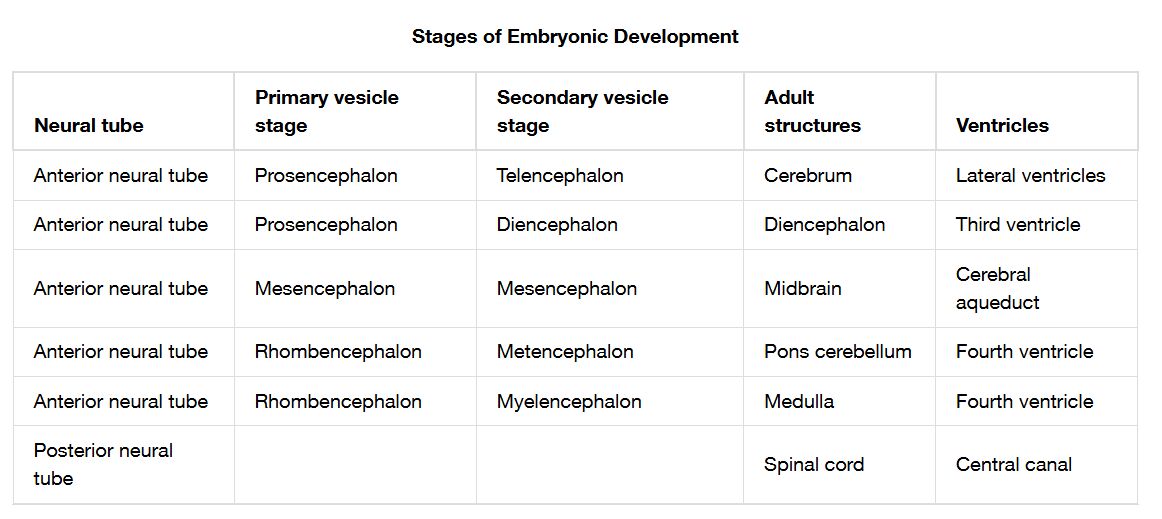The meninges, protective layers surrounding the brain and spinal cord, play a crucial role in supporting and safeguarding the central nervous system during embryonic development and beyond. This article explores an image depicting the meninges within the longitudinal fissure of the superior sagittal sinus, highlighting the dura mater, arachnoid, pia mater, subarachnoid space, and arachnoid villi, which facilitate cerebrospinal fluid (CSF) drainage into the bloodstream.

Dura mater The dura mater is the outermost meningeal layer, adjacent to the inner surface of the cranium, providing robust protection to the brain. It contains the superior sagittal sinus, a key site for CSF drainage.
Arachnoid The arachnoid is the middle meningeal layer, located between the dura mater and pia mater, forming part of the subarachnoid space. It supports the flow of CSF and contains arachnoid villi for drainage.
Subarachnoid space The subarachnoid space lies between the arachnoid and pia mater, filled with CSF to cushion the brain. It allows for the circulation and eventual drainage of this protective fluid.
Pia mater The pia mater is the innermost meningeal layer, adhering closely to the brain’s surface, providing a delicate protective covering. It follows the contours of the brain and spinal cord.
Arachnoid villus The arachnoid villus protrudes into the dural sinus, allowing CSF to filter back into the venous blood for drainage. This structure is critical for maintaining proper intracranial pressure.
Superior sagittal sinus The superior sagittal sinus is a large venous channel within the dura mater, running along the longitudinal fissure. It collects CSF from arachnoid villi and drains it into the bloodstream.
Longitudinal fissure The longitudinal fissure is the deep groove separating the brain’s two hemispheres, housing the superior sagittal sinus. It provides a pathway for meningeal layers and CSF dynamics.
Cerebrospinal fluid (CSF) Cerebrospinal fluid (CSF) fills the subarachnoid space, cushioning the brain and spinal cord while removing waste. It is drained via arachnoid villi into the superior sagittal sinus.
Cranium The cranium encases the brain, with the dura mater attached to its inner surface, offering rigid protection. It supports the meningeal structure and brain stability.
Brain The brain, covered by the pia mater, is the central organ protected by the meninges and CSF. Its development and function rely on the integrity of these surrounding layers.
Anatomical Overview of the Meninges
The meninges form a protective multilayered system around the brain and spinal cord. This structure is essential during embryonic development and throughout life.
- The dura mater provides the outermost tough layer, anchoring to the cranium.
- The arachnoid lies beneath, creating the subarachnoid space with CSF.
- The pia mater adheres closely to the brain, following its contours.
- The longitudinal fissure houses the superior sagittal sinus for drainage.
- The cranium and brain are integral to this protective framework.
Role of the Subarachnoid Space and CSF
The subarachnoid space and CSF are vital for brain protection and waste removal. This system supports neurological health from embryonic stages.
- The subarachnoid space contains CSF, acting as a shock absorber.
- CSF circulates to nourish the brain and remove metabolic byproducts.
- The arachnoid villi facilitate CSF drainage into the superior sagittal sinus.
- This process maintains intracranial pressure and prevents hydrocephalus.
- The space’s development is critical during embryogenesis.
Function of Arachnoid Villi and Dural Sinuses
Arachnoid villi and dural sinuses play a key role in CSF homeostasis. Their structure ensures efficient fluid dynamics.
- The arachnoid villus allows CSF to filter into the venous system.
- The superior sagittal sinus collects and drains this fluid into blood.
- These structures prevent fluid buildup around the brain.
- Their development aligns with meningeal maturation.
- Proper function avoids pressure-related complications.
Clinical Relevance and Related Conditions
Understanding meningeal anatomy aids in diagnosing and treating neurological issues. This knowledge is crucial for clinical practice.
- Blockage of arachnoid villi can lead to hydrocephalus, causing fluid accumulation.
- Dura mater tears may result in epidural hematomas, requiring surgery.
- Subarachnoid space bleeding can indicate subarachnoid hemorrhage.
- Pia mater inflammation is linked to meningitis, affecting brain health.
- Imaging like MRI assesses meningeal and CSF integrity.
The meninges, with their distinct layers of dura mater, arachnoid, and pia mater, along with the subarachnoid space and arachnoid villi, provide essential protection and CSF drainage within the longitudinal fissure of the superior sagittal sinus. This intricate system, developed embryonically, safeguards the brain and maintains intracranial pressure, while conditions like hydrocephalus underscore its clinical significance. This detailed exploration enhances understanding of neurological anatomy and informs effective medical interventions.

